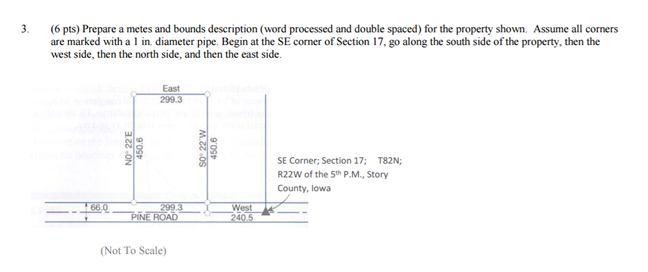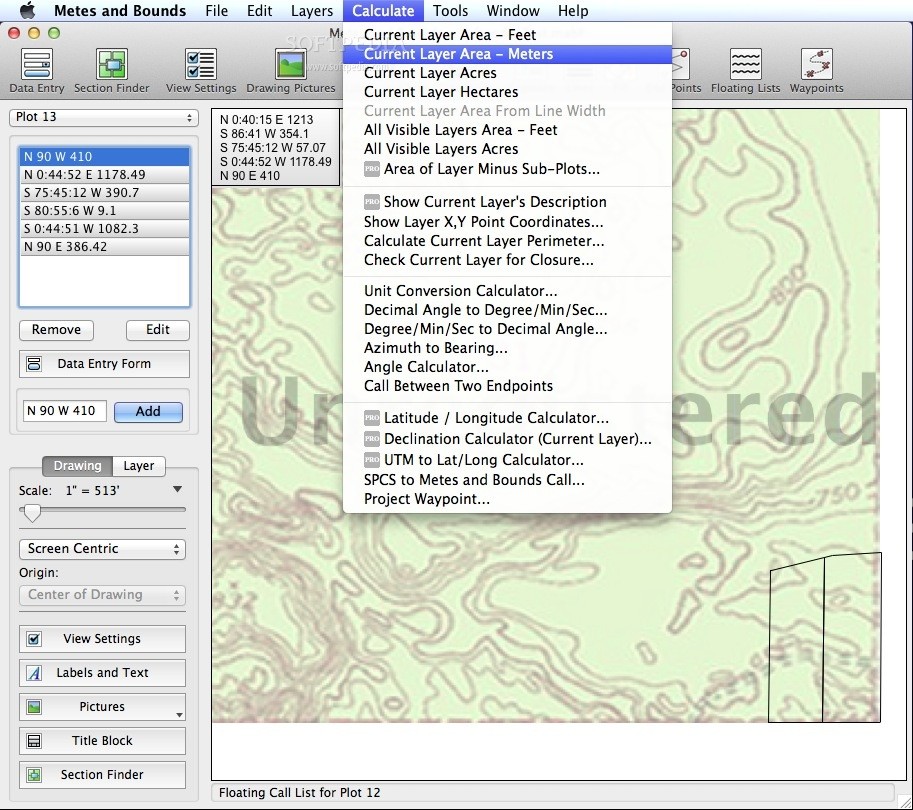

Correction Linesīecause the Earth is an oblate spheroid, range lines are not exactly 6 miles apart along the entire length, since they must ultimately converge to the same point at the North Pole. In many states, the rectangular survey system is supplemented with a mete-and-bounds description to describe small parcels of land. Townships are further subdivided into 36 1-square mile sections, with each section equal to 640 acres. These quadrangles are further subdivided in 16 townships, with each side of a township measuring 6 miles and covering an area of 36 square miles. Principal meridians and base lines partition the land into quadrangles, which are squares of land with each side measuring 24 miles.

The rectangular survey system specifies locations by using a rectangular coordinate system - hence, the name - that consists of principal meridians that run north and south and identifiable by longitude, and base lines that run east and west, identifiable by latitude. The rectangular survey system (aka tier-and-range system, government survey system), was specified by Congress in 1785 to mark large tracts of land that the United States received in its early years, including the Northwest Territory. The actual placement of the monuments is more important than the lengths and angles specified in the legal description, since the measured lengths and angles have meaning only in reference to the monuments and, additionally, marking the beginning and the end with a monument guarantees that the area will be closed. Nowadays, many monuments are iron pins or concrete posts installed by surveyors or by the U.S. Of course, for a metes and bounds description to be legally sufficient, the location of the POB must be specified, and is usually specified by a monument (aka landmark), which can be a large artificial or natural object or other stable structure, including rocks, trees, streams, railroads, roads, and intersections that are recorded by surveyors to locate property. This continues to the point of end ( POE), which is identical to the point of beginning, since all properties must have enclosed boundaries. Starting at the POB, the length of each boundary is described and the angle that it forms with the previous boundary. A mete is a boundary line and bounds is the area enclosed by the metes - hence, the name. A metes-and-bounds description uses lengths and angles of boundaries starting at the point of beginning ( POB). Metes-and-bounds descriptions were used in the original 13 colonies before the rectangular survey system was developed.


There are 3 independent methods that can be used to determine the exact location and boundaries of a parcel of land: Legal descriptions always note the county and state in which the property is located.
#DEFINITION OF METES AND BOUNDS SOFTWARE#
The Federal Bureau of Land Management and the USDA Forest Service are developing a National Integrated Land System (NILS), using common methods nationwide based on new technology and software to record the survey data and other information for land records. Today, the accuracy of property descriptions is greatly enhanced using computers, satellites, lasers, and global positioning systems (GPS). If the location, size, and shape of buildings on the lot are also given, then it is called a spot survey. The surveyor prepares 2 documents: a survey that gives the property's description and a survey sketch that shows the location and dimensions of the parcel. Only a licensed surveyor should prepare property descriptions, since inaccuracies can cause title problems later. Legal descriptions are generally prepared by a licensed surveyor, who is trained and authorized to locate and determine the legal description of any property.


 0 kommentar(er)
0 kommentar(er)
